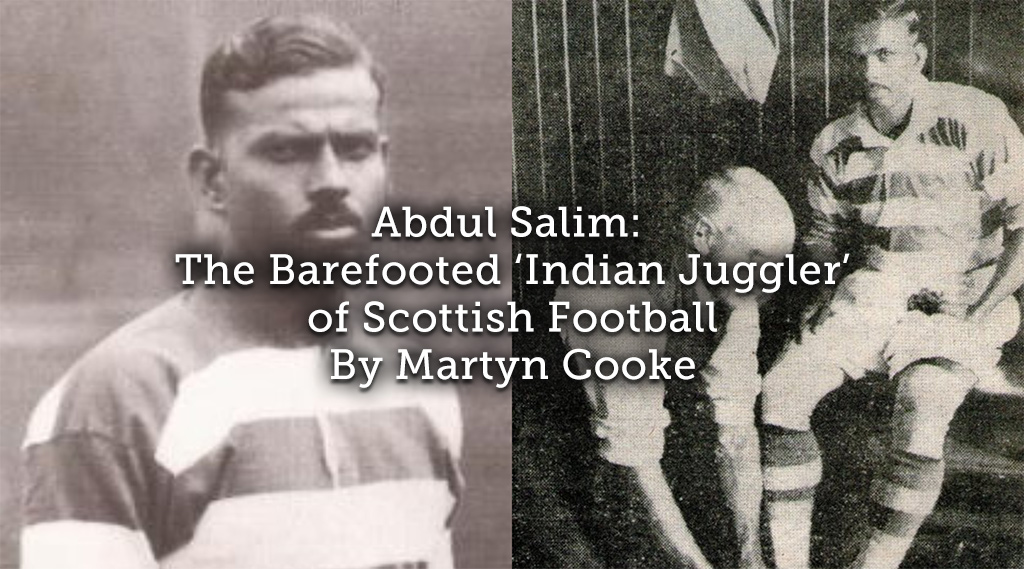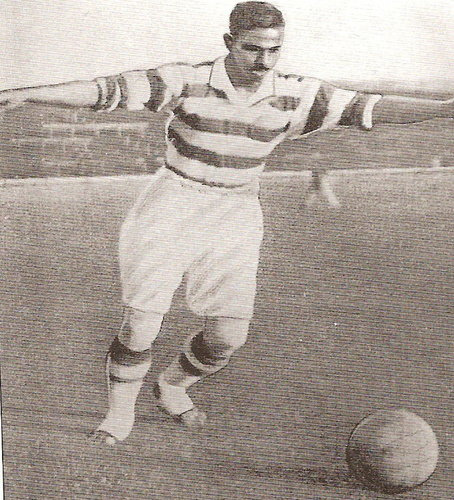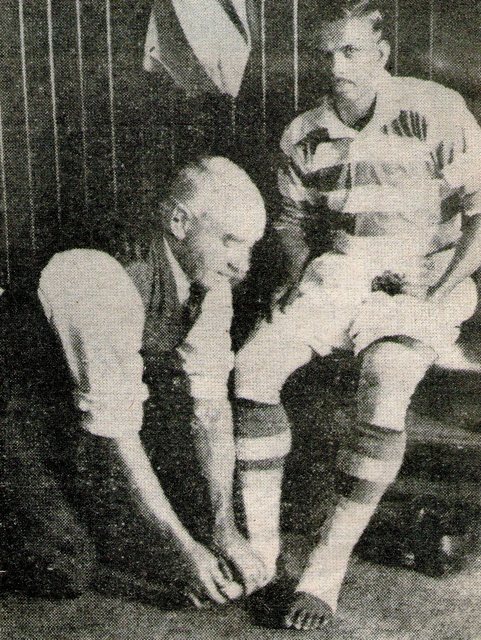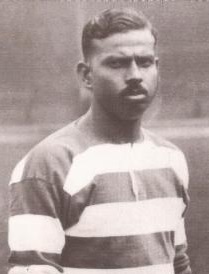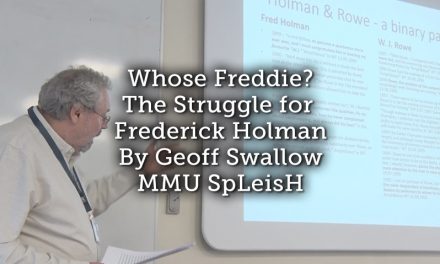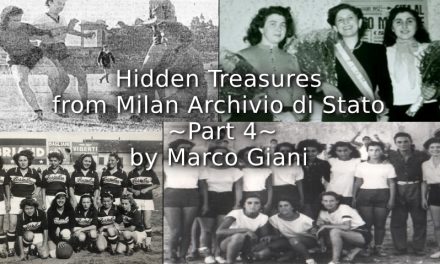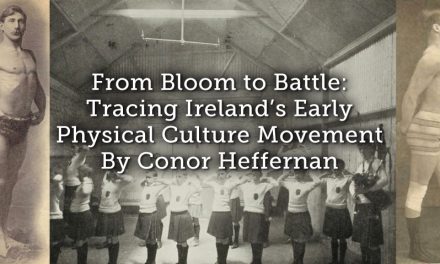Over the previous two decades there has been an increasing interest, both in the academic community and among the wider public, in the history of non-Caucasian athletes in Britain. This is especially true of association football, where a number of authors have sought to bring attention to the narratives of the pioneering players ‘of colour’ that broke down racial and societal barriers during the late-nineteenth and twentieth centuries.
Phil Vasili highlighted the story of Arthur Wharton in The First Black Footballer and produced the first comprehensive history of non-Caucasian football players in Britain through the publication of Colouring Over the White Line. More recently Susan Gardiner released The Wanderer, a biography of Frank Soo who was the first player of Chinese descent to appear in the Football League and the first non-Caucasian to represent England at international level, whilst Walter Tull has been the subject of numerous studies and publications.
However, despite these efforts, the current literature only scratches the surface and there is still much work for academics, sports historians and researchers to do. There are a multitude of pioneering non-Caucasian football players that have yet to have their story told and whose accomplishments deserve greater attention from the public. This article seeks to build on the current body of research by presenting an account of the career of Abdul Salim, the first Indian to appear in British football.
Early life and career
Abdul Salim, who is also referred to in some contemporary reports as Salim Bachi Khan, Mohammed Salim and Mohammed Hashean, was born in Metiaburuz, a district in Calcutta (India), in 1904. Little is known about his early life or career, but it can be determined that he took an immediate interest in sport and that he represented a number of local football clubs including Chittaranjan, Bowbazar, Aryans, and Sporting Union.
In 1934 Salim was signed by the Mohammedan Sporting Club which had qualified for the First Division of the Calcutta Football League for the first time in its history. The team consisted of players from across India with Salim, who had developed a reputation for being a clever, skilful winger who was a beautiful crosser of the ball, brought in to compliment the existing forward line.
Salim’s arrival coincided with a period of unparalleled success for the Mohammedan Sporting Club who became the first native side to win the Calcutta Football League in their debut season in the top flight. This initial success marked the start of a period of domination for the club as they won the title in each of the following four seasons, winning the league an unprecedented five consecutive times in total, with the key players becoming relative stars. The Dundee Courier later claimed that Salim had ‘no other occupation than that of a pro footballer’ and that his wages for representing the Mohammedan Sporting Club during a four-month season was £90 plus bonuses.
Arrival in Scotland
After helping Mohammedan Sporting Club to win the Calcutta Football League in 1936, Abdul Salim was convinced by his brother to travel to Europe in a bid to showcase his talents to a wider audience. His brother, who is named in some modern publications as Hasheem, was a chief storeman on the S.S. City of Cairo and the pair boarded the vessel and sailed for Britain, arriving in Scotland at some point in August 1936.
Whilst the ship was docked in the River Clyde, Salim and his brother contacted Glasgow Celtic to request a trial so that he could demonstrate his ability in the hope of earning a contract. The first team manager, Willie Maley, tentatively agreed to give the Indian winger an opportunity but was left bemused when it became apparent that Salim played barefooted and refused to wear boots. The prospect of an unknown Indian winger who competed in bandaged feet appearing for Celtic created a significant amount of interest and puzzlement among the local populace. However, his ability soon became apparent when he was selected to play in an Alliance fixture against Hamilton in late August 1936 with the Glasgow Observer reporting that:
‘Abdul Salim, Celtic’s Indian trialist, tickling the crowd at Celtic Park on Friday with his magnificent ball manipulation. In his bare feet he was a conspicuous figure but this was further emphasised by his dark skin against the white and green of the Celtic strip. His play was top class. Every ball he touched went exactly to the place he wanted it to. Not one inch was out.’
He scored twice in a 5-1 victory with the Scottish Daily Express describing how the ‘ten twinkling toes of Salim’ had ‘hypnotised the crowd’ and, presumably, the opposition.
By the time that Salim made his second appearance for Celtic in an Alliance fixture against Galston on 28 August 1936, he was reported as being the ‘big attraction’ for the 8,000 spectators in attendance. The Indian winger was once again the star performer in a 7-1 win, setting up two goals for teammates and giving ‘the crowd football pure and simple’. The Dundee Courier described how he ‘received a deserved ovation’ and that a ‘crowd of several hundreds waited for him at the pavilion entrance’ after the game had concluded.
However, despite his hugely impressive start to life in Scotland and having been lauded as the ‘Indian Juggler’ by the press, Salim’s time at Celtic would be short-lived. Reports suggest that the winger suffered from home-sickness which was further compounded by the fact that he did not speak any English, with his brother acting as a translator. Willie Malay had been keen to retain Salim’s services for the remainder of the season but on 19 September 1936 the Indian winger had boarded the S.S. City of Cairo and begun the journey home, taking with him a Celtic jersey as a memento.
Later life and legacy
Abdul Salim returned to India in time for the start of the 1937 Calcutta Football League season and resumed his place in the Mohammedan Sporting Club starting line-up, helping the team to win four more titles.
In A Social History of Indian Football Kausik Bandyopadhyay and Boria Majumdar recite comments made by Salim’s second son, Rashid Ahmed, who wrote to Celtic when his father’s condition was deteriorating due to illness in the latter years of his life. Ahmed claims that the club responded by sending his father a £100 bank draft to help pay for treatment, although it was never cashed as the family wished to preserve what they saw as proof that Salim was still alive in Celtic’s memory.
Salim died in 1980 and, despite being the first Indian to play in Britain, he has been largely overlooked in football histories. This is primarily because the Alliance fixtures in which he played for Celtic were effectively reserve team matches or friendlies and the absence of first team appearances has left him at risk of football obscurity. However, upon reflection his decision to travel halfway around the world to play football in Britain, despite not speaking English, is even more remarkable when you consider he chose to play barefooted amongst Scottish professionals.
Adbul Salim was truly a pioneer.

